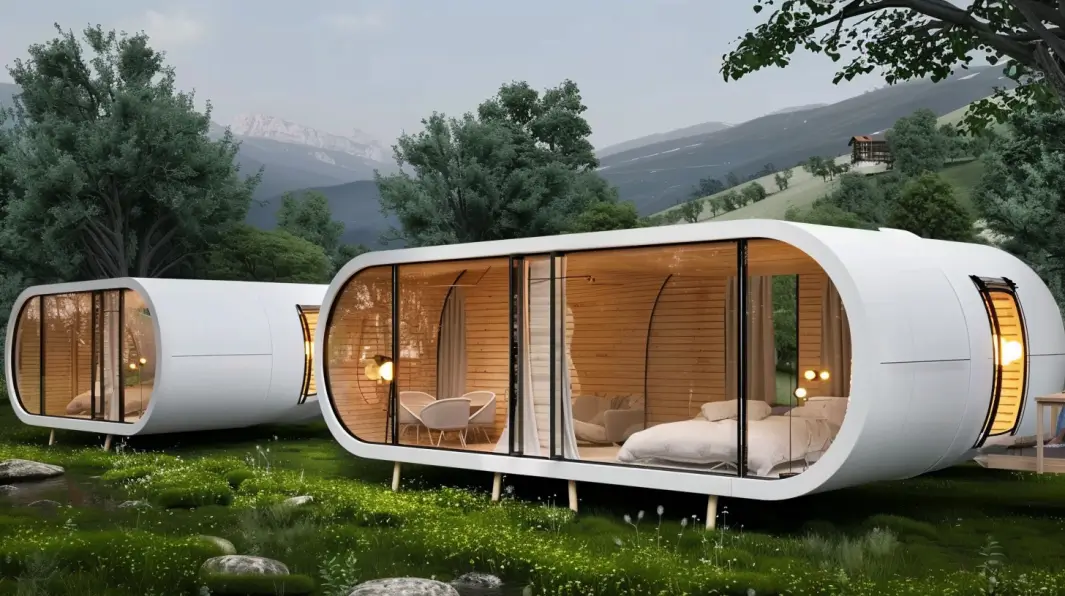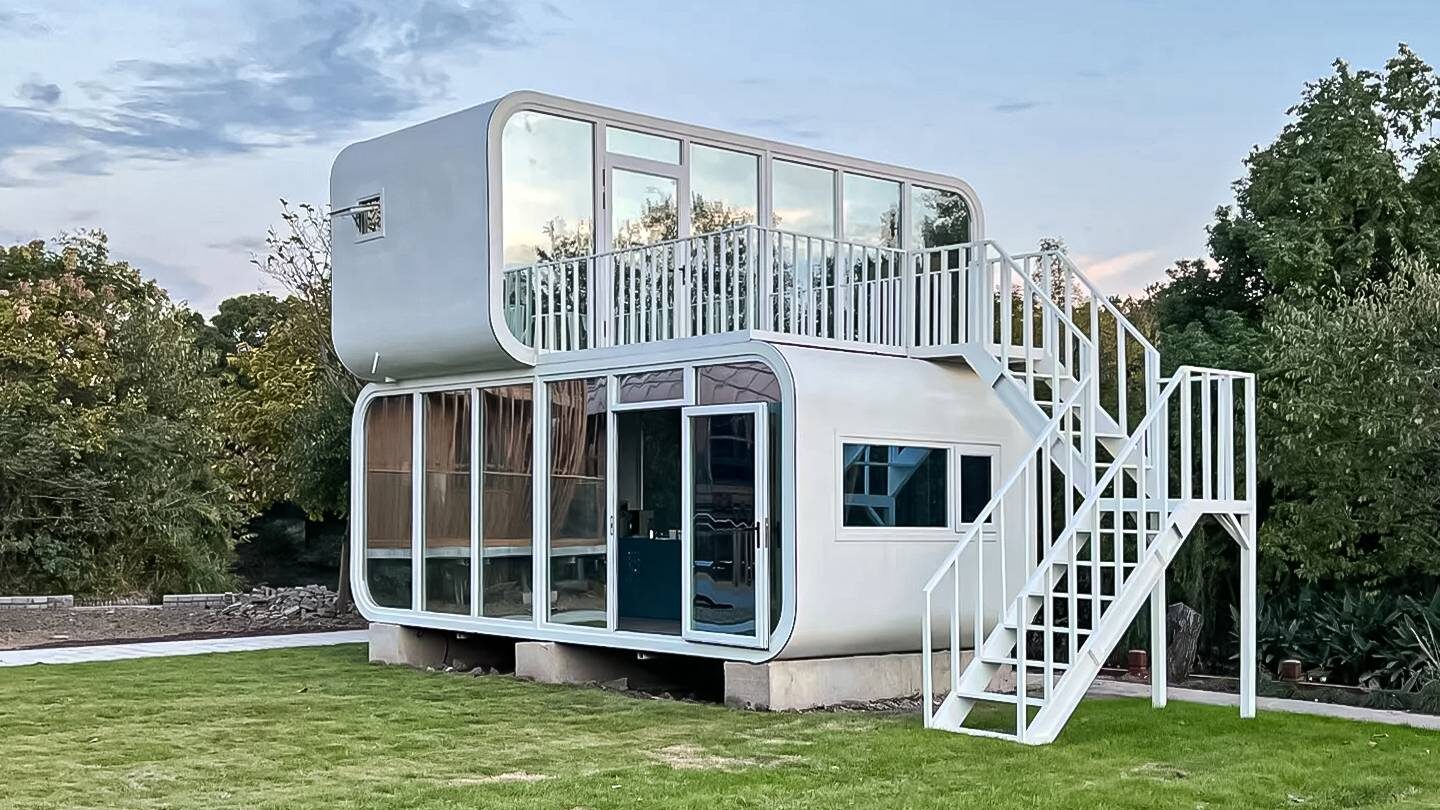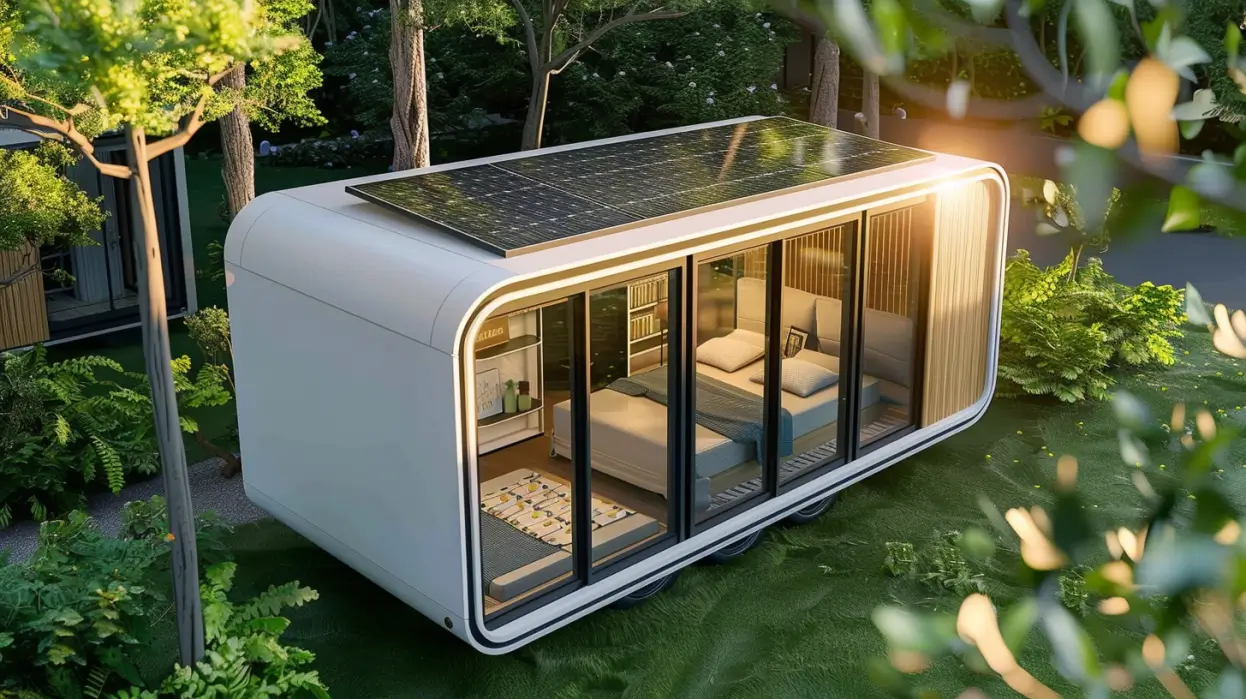As the demand for affordable, sustainable, and flexible housing solutions continues to grow, pod housing units are emerging as one of the most innovative answers. Compact yet versatile, these prefabricated structures are designed to fit a variety of lifestyles and business needs — from modern urban living to luxury glamping retreats.
At Roofjet, we specialize in creating modular pod solutions that blend functionality with style, catering to homeowners, resorts, and developers worldwide. In this guide, we’ll explore the different types of pod housing units, how they can be used, and why they are shaping the future of modern living.
Pod housing units, often called “pods”, are compact, prefabricated structures designed to maximize space and functionality. Unlike traditional homes, pods are built off-site in controlled environments, then delivered and assembled quickly — saving both time and construction costs.
What makes pod housing unique is its modularity. Units can stand alone as single living or working spaces, or they can be connected and expanded to create larger layouts. This flexibility makes them ideal for a wide range of uses, from private residences and offices to Airbnb rentals, resorts, and even mobile retreats.
Key benefits of pod housing units include:
At Roofjet, our Apple Cabin and Space Capsule Pods are prime examples of how pods seamlessly combine modern design with practical living solutions, offering comfort, durability, and customization in a compact package.
Pod housing units come in various forms, each designed for a specific lifestyle, business model, or environment. From compact city dwellings to luxury glamping retreats, here are the most common types of pods and how they’re used today:
Living pods are designed as self-contained residential units. They are compact but functional, offering the essentials of a home in a modern, modular design.

💡 Roofjet Example: The Apple Cabin serves as a versatile living pod, ideal for both residential buyers and hospitality projects such as boutique rentals.
Specialized pods are designed for specific functions beyond residential use. They’re especially popular with businesses, resorts, and entrepreneurs.

💡 Roofjet Example: The Space Capsule Pod is a popular choice for Airbnb hosts and glamping operators looking to offer guests a unique, futuristic experience.
These pods serve supporting roles in both residential and commercial projects.

💡 Roofjet Example: Our custom modular service pods are ideal for resorts and large-scale developers who need scalable, durable solutions.
While pod housing units vary in design and purpose, they all share a set of core characteristics that make them one of the most promising solutions for modern living and business.
Pods are typically prefabricated in sections and then assembled on-site. This modular approach ensures higher quality control, faster installation, and the ability to scale or reconfigure layouts as needs change.
From layouts to materials, pod units can be tailored to customer needs. Whether it’s adding solar systems for off-grid living, designing interiors for luxury resorts, or creating compact urban layouts, pods offer endless possibilities.
Unlike traditional buildings that may take months (or years), pod housing units can be delivered and assembled within weeks. This makes them ideal for time-sensitive projects like resorts, Airbnb rentals, or seasonal business setups.
Pods often incorporate eco-friendly materials and renewable energy systems, making them a sustainable choice for both homeowners and businesses. Off-grid solutions such as solar power and water recycling are increasingly popular features.
Perhaps the greatest feature of pods is their versatility. They can serve as full-time homes, mobile offices, Airbnb rentals, resort accommodations, cafés, or even classrooms.
The global housing and hospitality industries are undergoing rapid change, and pod housing units are at the center of this transformation. Their rise can be linked to three major trends: affordability, sustainability, and flexibility.
Traditional housing prices continue to soar, especially in urban areas. Pod units offer an affordable alternative, providing compact yet functional living spaces at a fraction of the cost. For families, students, and first-time buyers, pods present a realistic path to ownership.
According to recent studies, the glamping market is projected to grow by over 10% annually through 2030, while Airbnb hosts continue to seek unique accommodations to attract guests. Pod housing units — from luxury glamping cabins to space capsule pods — meet this demand with stylish, eco-friendly designs that stand out in a competitive short-term rental market.
The remote work revolution has fueled the need for dedicated office pods. Many professionals now prefer quiet, private backyard offices or resort-based workspaces, making pods a smart investment for property owners and hospitality operators.
Eco-conscious consumers are increasingly choosing off-grid pods equipped with solar panels, composting toilets, and sustainable materials. As green building practices gain traction worldwide, pod units offer a practical way to live or operate businesses sustainably.
Real estate developers and resort owners value pods for their fast construction timelines and scalability. Instead of waiting months for traditional builds, they can launch new projects — from boutique resorts to modular neighborhoods — in weeks.

Selecting the right pod housing unit is about more than appearance — it’s about durability, scalability, and long-term value. Here are the key factors to guide your decision:
Consider how the pod will be used and who the end-users are:
Pro Tip: Clarify the intended user experience first, then choose the pod type that best supports it.
Pods are long-term investments. Look for high-quality frames, weather-resistant insulation, and sustainable cladding materials to ensure units withstand varying climates and heavy use.
Pro Tip: Verify that units meet international safety and building standards to protect your investment.
Projects evolve over time, so pods should offer modular expansion and adaptable layouts. Customization also allows units to reflect your brand or aesthetic preferences, whether for a resort, residential complex, or commercial space.
Pro Tip: Choose suppliers that provide flexible designs and modular options for easy future upgrades.
For international projects, consider import regulations, certifications, and shipping logistics. Efficient handling by your supplier can prevent delays and minimize unexpected costs.
Pro Tip: Work with partners experienced in shipping, installation guidance, and regulatory compliance.
Evaluate pods not only on upfront costs but also on their income potential, operational efficiency, and maintenance requirements. Well-chosen units can quickly generate revenue through rentals, guest bookings, or added property value.
Pro Tip: Prioritize units that combine low maintenance with high appeal to end-users for maximum long-term ROI.
Frequently Asked Questions (FAQ) About Pod Housing Units
1. Are pod housing units suitable for commercial use?
Yes. Pod housing units are widely used in resorts, Airbnb rentals, office parks, and modular housing projects. Their scalability and fast installation make them a smart choice for businesses looking to expand quickly.
2. How long do pod housing units last?
High-quality pod units, like those manufactured by Roofjet, are built with durable steel frames and weather-resistant materials. With proper maintenance, they can last 20+ years, making them a long-term investment for developers.
3. Can pod units be customized for branding or business needs?
Absolutely. Pod housing units can be custom-designed in layout, finishes, and exterior style to align with your brand identity. Resorts and Airbnb operators often request tailored interiors to match their themes.
4. Are pod units easy to transport and install internationally?
Yes. Pods are prefabricated and shipped in sections or complete modules. Roofjet provides logistics, export support, and installation guidance, ensuring smooth international delivery and setup.
5. Do pod units comply with building codes and regulations?
Compliance varies by country and region. Roofjet ensures that all pods meet international safety and building standards, and we work with clients to help navigate local regulations during planning.
6. Can pod housing units operate off-grid?
Yes. Many pod units can be equipped with solar panels, water recycling systems, and eco-friendly insulation, making them suitable for off-grid resorts, eco-villages, or remote project sites.
Conclusion: The Future of Business Lies in Pod Housing Units
From luxury resorts to urban developments and modular offices, pod housing units are reshaping how businesses approach space. Their speed of construction, flexibility, and potential for strong ROI make them one of the most practical and forward-thinking investments in today’s market.
For developers, hospitality operators, and entrepreneurs, the choice is clear: pod housing units are not just a trend — they are the future of scalable, sustainable business infrastructure.
When planning your next project, look for tailored pod solutions that align with your operational goals, whether it’s an eco-resort, an urban rental complex, or modular workspaces.
Ready to Build Smarter?Partner with Roofjet to design and deliver pod housing units that match your business goals. Contact us today for a consultation and detailed catalog.
